The DC analysis is regarding the amplifier calculations, but that is not relevant to the topic. The equivalent DC circuit of the amplifier is:

The known values are: \$R_{g1}=300\text{ k}\Omega\$, \$R_{g2}=200\text{ k}\Omega\$, \$R_s=100\text{ k}\Omega\$, \$k_n=25\ \mu\text{A/V}^2\$, \$\lambda=0.02\text{ V}^{-1}\$, \$V_{tn}=1\text{ V}\$, \$V_{dd}=10\text{ V}\$.
Now the problem is to find the bias point (drain current - \$I_D\$, voltage \$V_{GS}\$ and voltage \$V_{DS}\$).
First, I calculated the gate voltage as: $$V_G=\frac{R_{g2}}{R_{g1}+R_{g2}}V_{dd}=4\text{ V}$$ Then, I assumed that the transistor is operating in saturation mode, and set up these equations: $$I_D=k_n(V_{GS}-V_{tn})^2(1+\lambda V_{DS})$$ $$V_G=V_{GS}+R_s I_D$$ $$V_{dd}-V_{DS}-R_s I_D=0$$
The problem is, I cannot solve those equations, as there always seems to be one element missing. Any ideas on how to solve this?